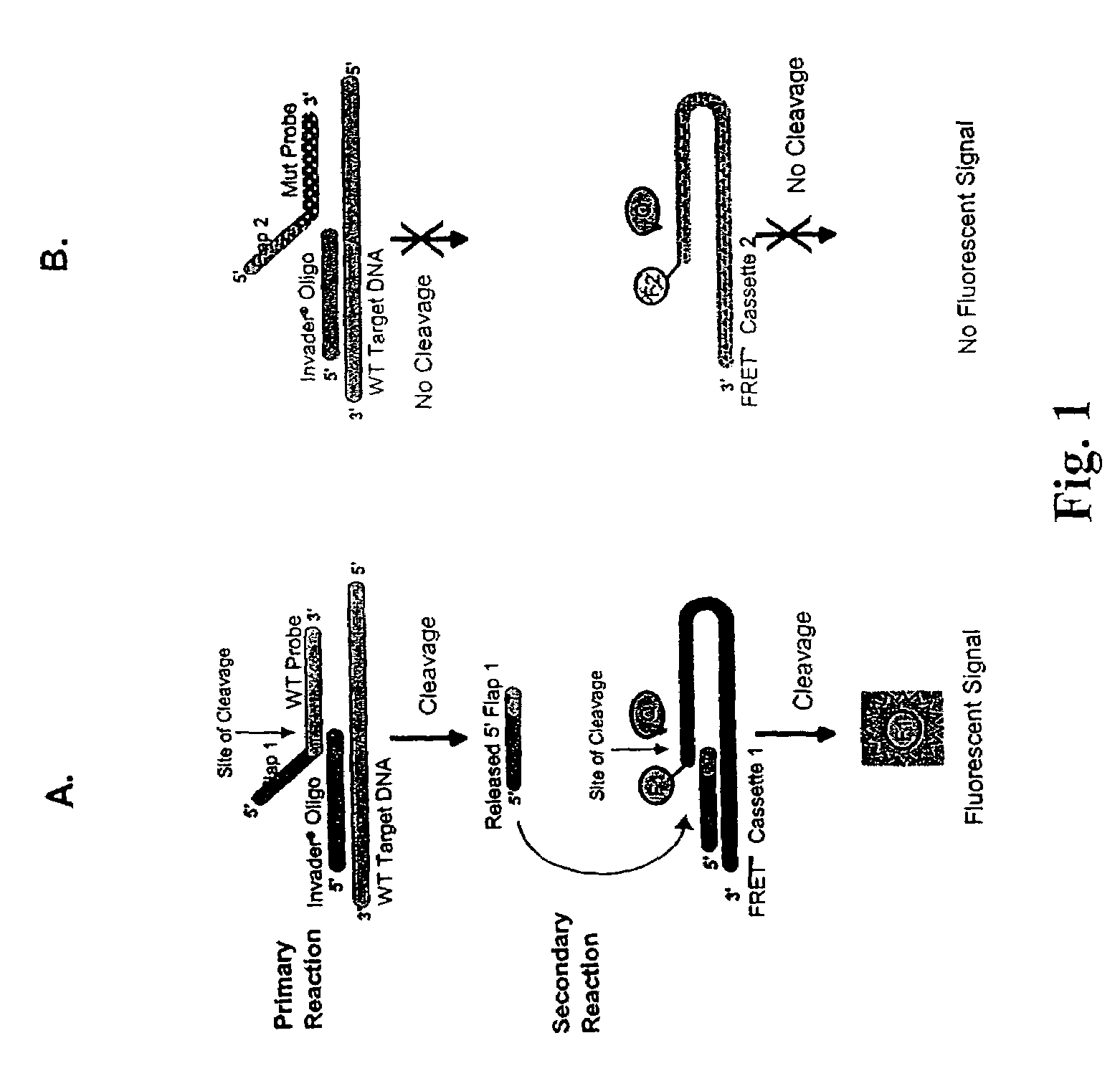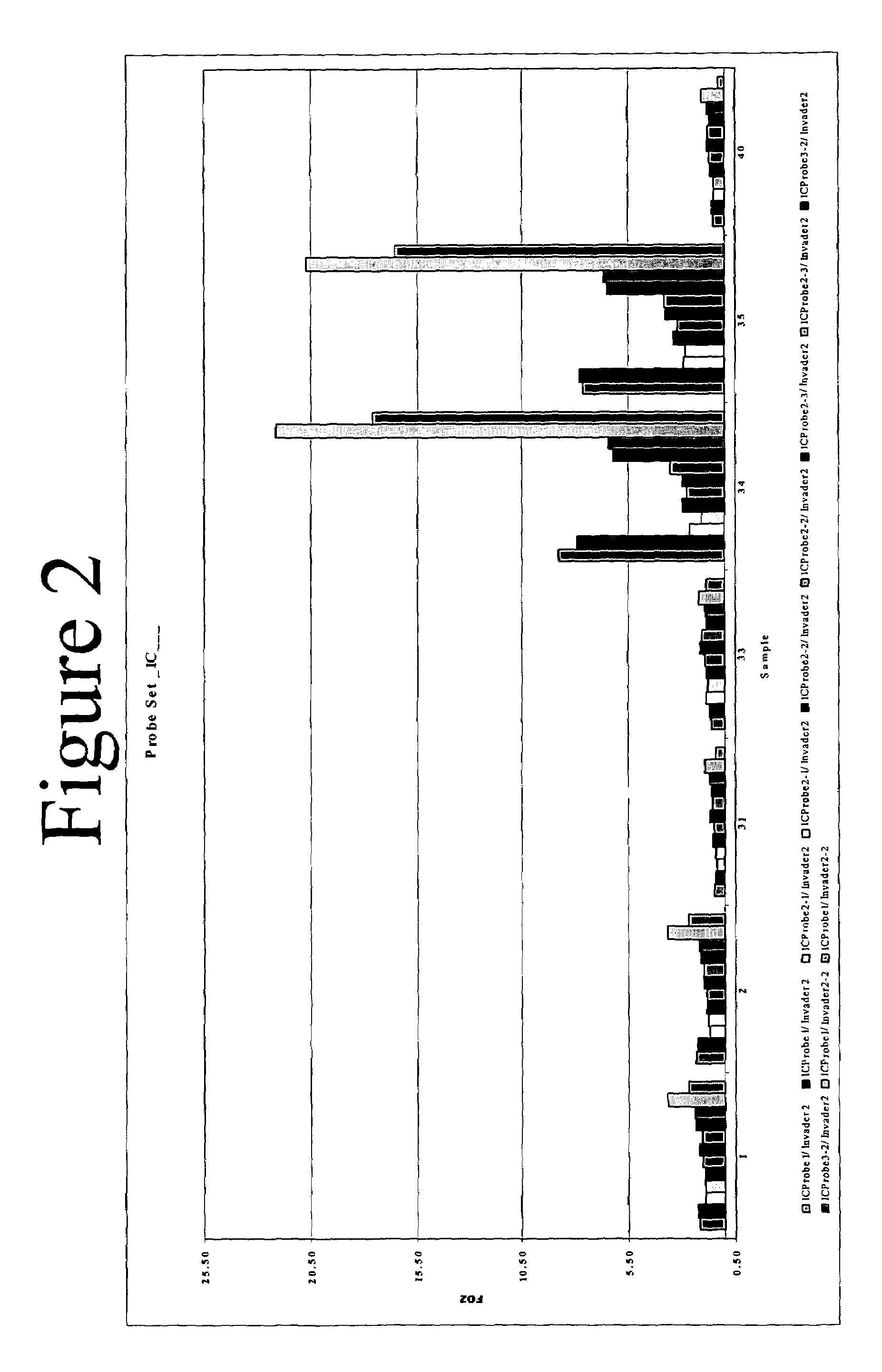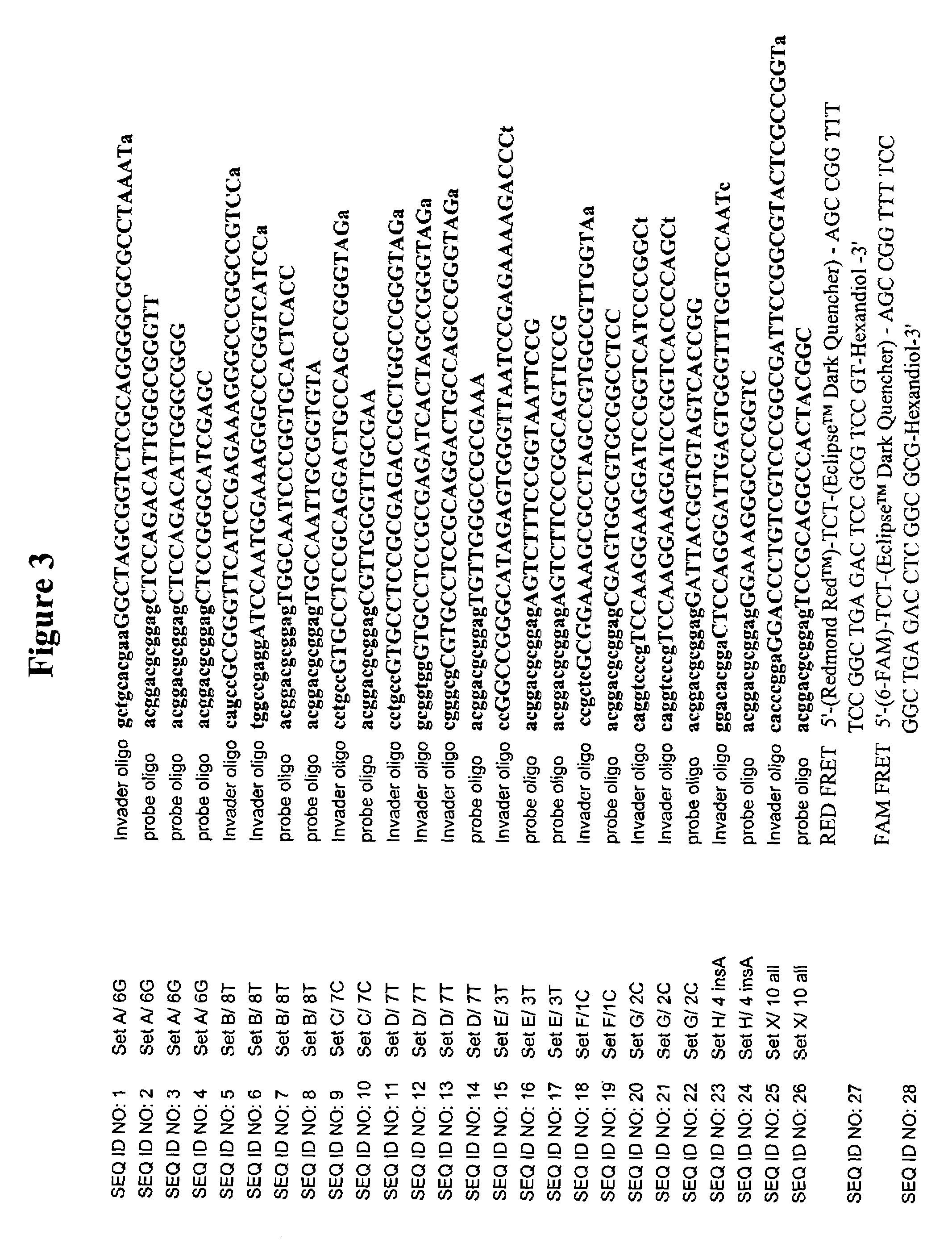Determination of hepatitis C virus genotype
a technology of hepatitis c virus and genotype, applied in the direction of enzymology, viruses/bacteriophages, transferases, etc., can solve the problems of limited specificity and sensitivity of serologic typing, and achieve the effect of accurately determining the genotype of hcv, accurate, homogeneous, and sensitiv
- Summary
- Abstract
- Description
- Claims
- Application Information
AI Technical Summary
Benefits of technology
Problems solved by technology
Method used
Image
Examples
example 1
Design of Oligonucleotides to Detect Multiple HCV Strains
[0181]The objective of these experiments was to arrive at oligonucleotide designs suitable for use in INVADER assays to detect particular sequences in the 5′ UTR of HCV. As a first step, HCV DNA sequences were obtained from Genbank (NCBI) and the Hepatitis Virus Database (found at: s2as02.genes.nig.ac.jp) and aligned using Clustal W (DNA Star, Madison, Wis.). Regions that combined suitable sequence conservation with limited sequence divergence between genotypes, preferably of one or a few nucleotides, were identified as candidate targets for INVADER assays. Candidate probe oligonucleotides were designed by searching for stretches of sequence comprising a limited number of mismatches. Designs were generated to several sequences on either the sense or antisense strands. Suitable INVADER oligonucleotides were designed to accompany the respective probe oligonucleotide candidates. Several such probe and INVADER oligonucleotide pair...
example 2
Determination of Genotypes from AMPLICOR and TAQMAN Amplicons
[0199]A total of eight separate INVADER reactions were identified as specific for between one and four different HCV genotypes. FIG. 4 presents a schematic illustration of how the HCV genotype matrix can be used to identify genotype based on results obtained from the eight selected probe sets. A ninth INVADER reaction was used as a positive control for the presence of DNA amplified from the 5′ UTR.
[0200]Reactions were set up as described in Example 2, using 10 μl volumes of diluted target and INVADER reaction master mix. Reactions were incubated at 63° C. and read in a fluorescence microtiter plate reader as described above after 30 and 60 minutes. Exemplary data are presented in FIG. 5 for AMPLICOR MONITOR samples and FIG. 6 for TAQMAN samples. In each case, panel A presents FOZ data obtained from the internal control (FAM signal); panel B, from the genotype-specific probe sets (RED signal); and panel C, the ratios of the...
example 3
Co-Detection of Two HCV Genotypes in a Single Sample
[0201]In some cases, it is possible that a sample may contain more than one HCV genotype, e.g. due to co-infection by multiple strains. The ability of the INVADER assay to discern the presence of a mixed infection and to identify the genotypes present was tested.
[0202]Aliquots of AMPLICOR amplicons generated from samples of known genotype were mixed in the following ratios:
[0203]
SampleGenotype 1Genotype 2150%50%275%25%390%10%495% 5%525%75%610%90%7 5%95%
Such mixtures were also made to combine amplicons from a genotype 1 and a genotype 3 sample, and a genotype 2 and a genotype 3 sample.
[0204]INVADER reactions were carried out on these artificially mixed samples as described in Example 2. Exemplary results are presented in FIG. 7 and suggest that in some cases it may be possible to discern infections in which two different genotypes are present at a 1:1 or 1:3 ratio or less.
PUM
| Property | Measurement | Unit |
|---|---|---|
| temperature | aaaaa | aaaaa |
| temperature | aaaaa | aaaaa |
| volume | aaaaa | aaaaa |
Abstract
Description
Claims
Application Information
 Login to View More
Login to View More - R&D
- Intellectual Property
- Life Sciences
- Materials
- Tech Scout
- Unparalleled Data Quality
- Higher Quality Content
- 60% Fewer Hallucinations
Browse by: Latest US Patents, China's latest patents, Technical Efficacy Thesaurus, Application Domain, Technology Topic, Popular Technical Reports.
© 2025 PatSnap. All rights reserved.Legal|Privacy policy|Modern Slavery Act Transparency Statement|Sitemap|About US| Contact US: help@patsnap.com



